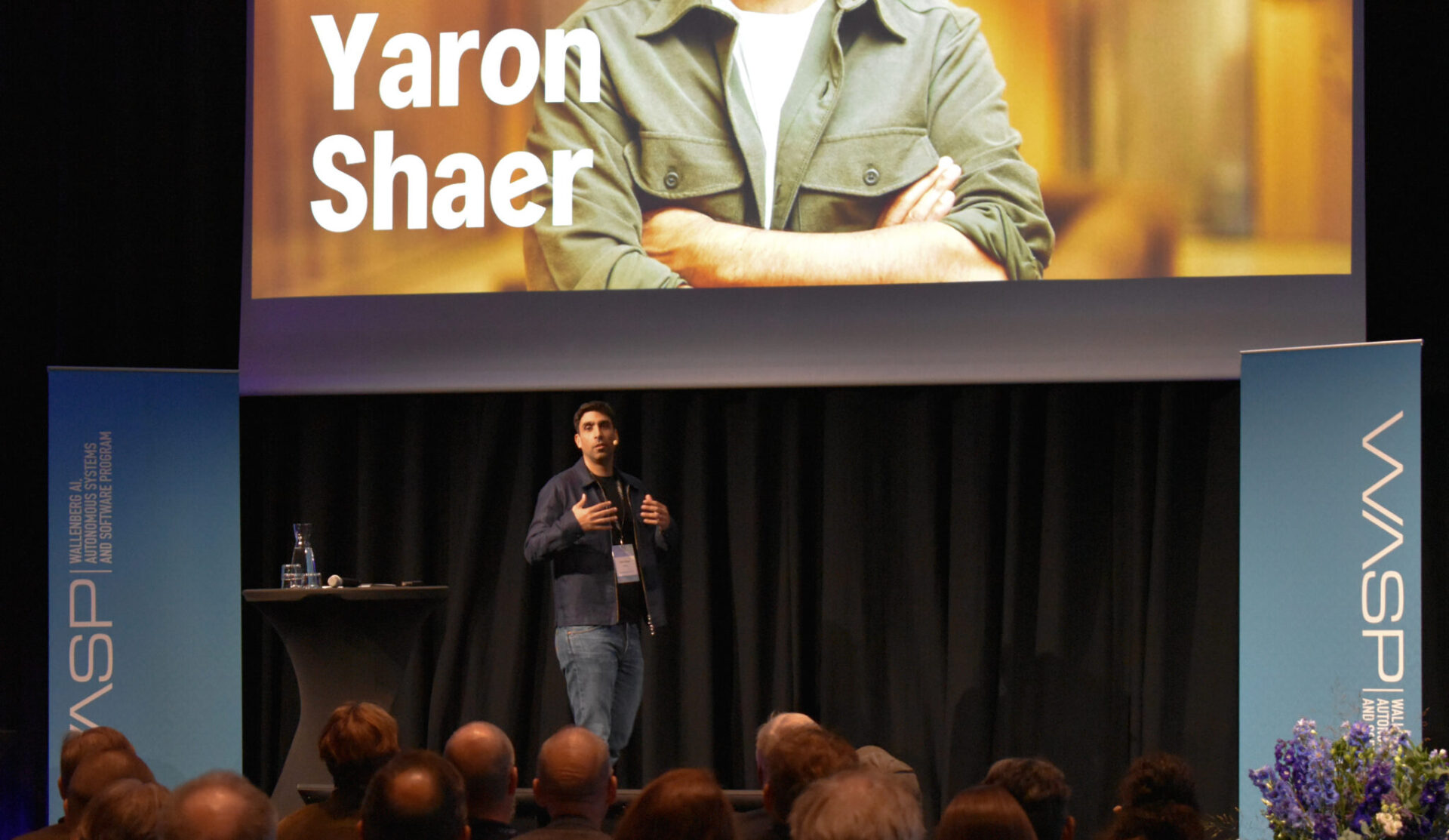Stockholm, October 6–7, 2025 — Over 330 researchers, industry leaders, and policymakers gathered for the WASP Academia & Industry Days to explore how Sweden can translate its research strengths into scalable impact for competitiveness, sustainability, and security in AI and emerging technologies.
A Decade of Progress, a Future of Possibility
Sara Mazur, Executive Director of the Knut and Alice Wallenberg Foundation, reflected on WASP’s first decade, expressing confidence in the program’s continued relevance and momentum. Anders Ynnerman, Chair of the WASP Board and Director of Strategic Research at KAW, urged the community to aim higher and invest smarter.
“We’re much better than we think we are,” Ynnerman said, calling for a stronger voice and greater ambition across the Swedish AI ecosystem.
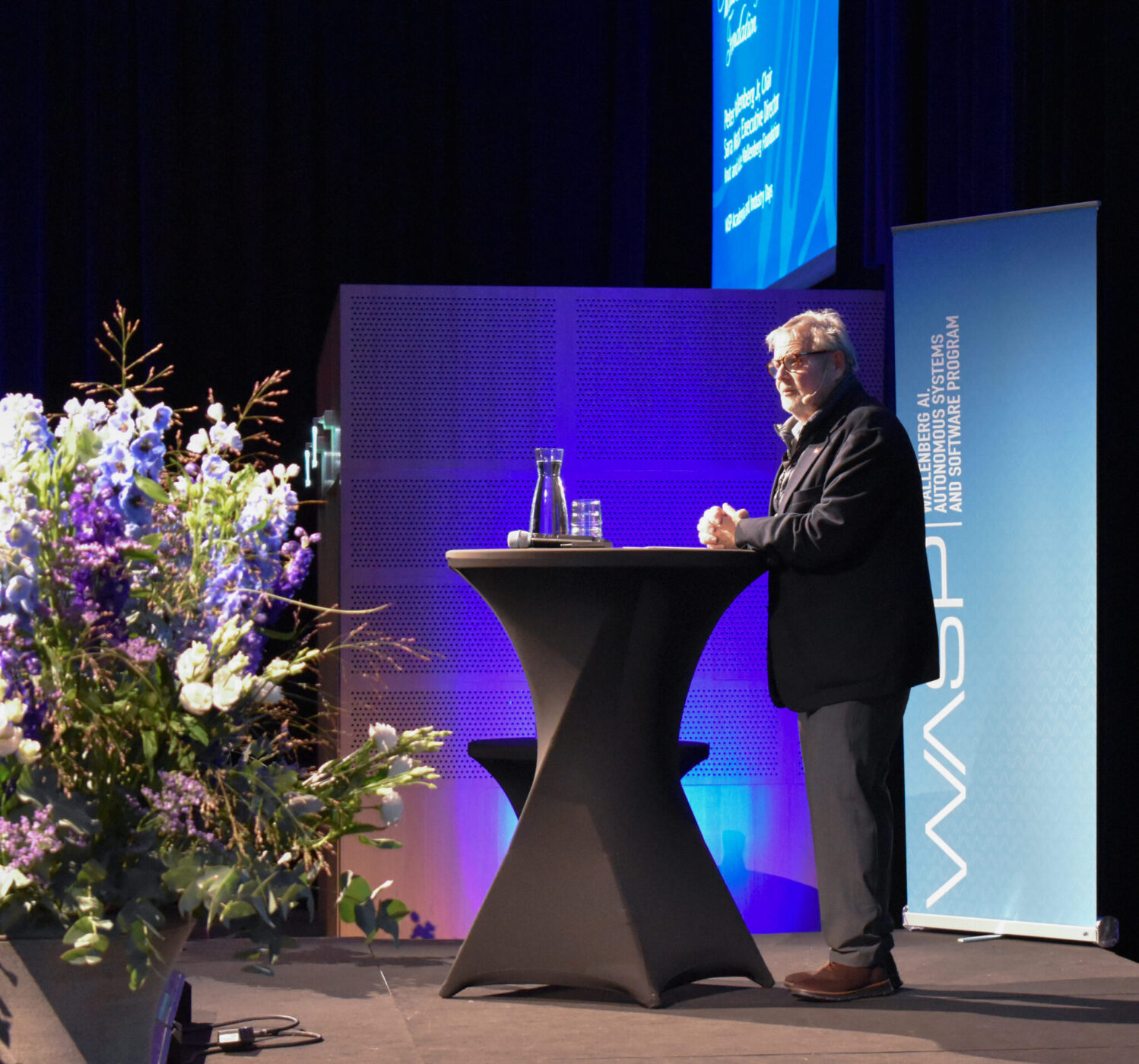
He emphasized the need to rebalance priorities—highlighting data curation as a strategic investment equal to compute power. Ynnerman proposed the creation of a national AI data center to support responsible data sharing, reduce unnecessary classification, and enable innovation through data sandboxes. He also stressed the importance of strengthening the “base of the triangle”: building competence through a critical mass of skilled people and resources.
Policy, Foresight, and the Role of Academia
Maja Fjaestad from the European Commission AI Office reminded attendees that AI policy must serve society. She encouraged Swedish and Nordic researchers to engage more actively in Brussels and invited PhD students to consider careers in the public sector.
“We tend to overestimate technical change and underestimate social change,” Fjaestad noted, referencing how early sci-fi predicted technologies like video conferencing but missed societal shifts such as the feminist revolution.
She called for earlier involvement from research communities in shaping EU policy: “The EU is our union—let’s help shape it.”
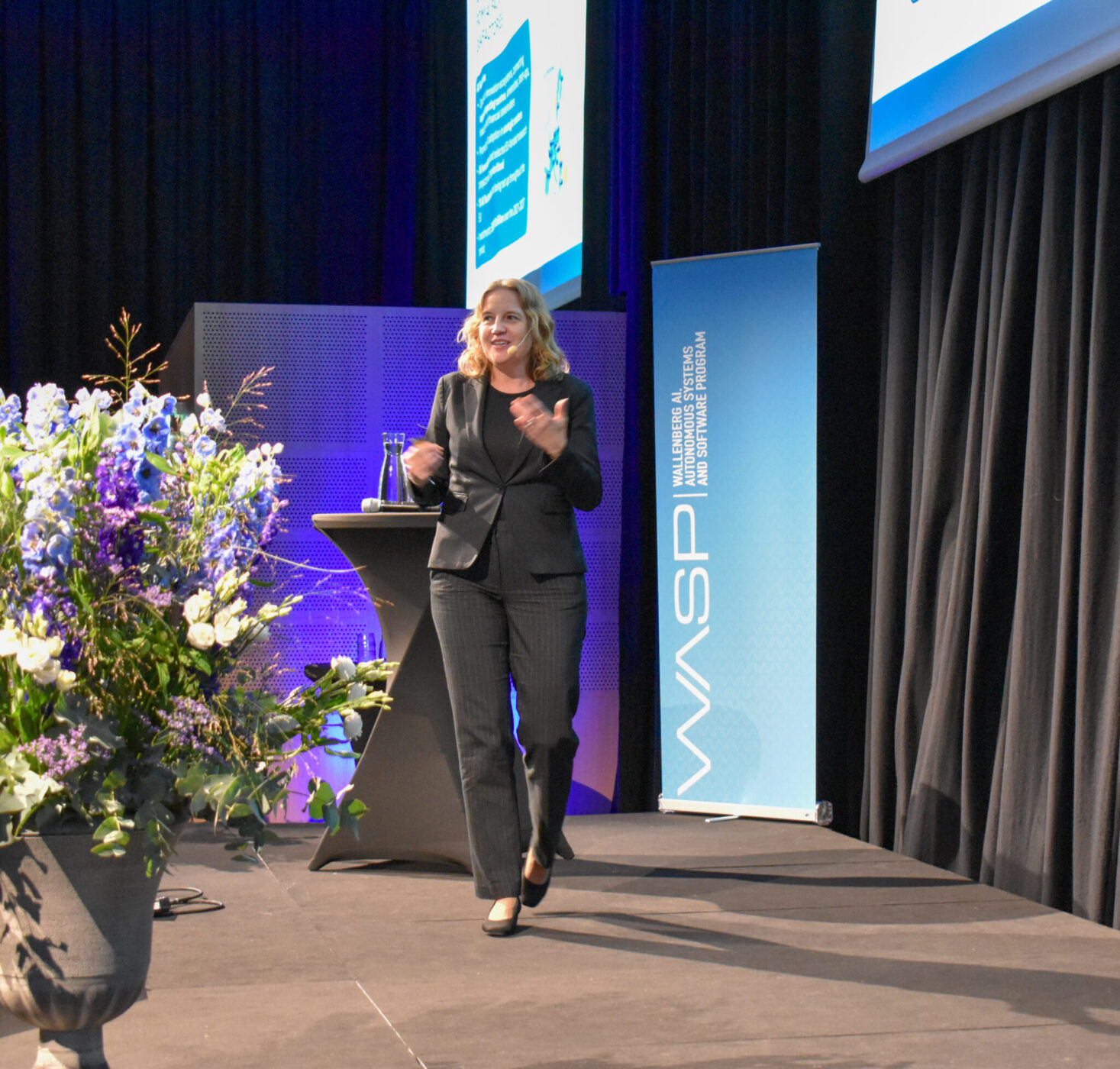
Niklas Berild Lundblad, Senior Advisor, outlined four strategic areas where academia can increase its impact on industry: identifying the next big problem, curating questions and data, developing trustworthy safety testing, and leading governance for public AI.
He also observed that as companies begin treating data as a balance-sheet asset, data sharing may become more challenging—making an experimental and anticipatory mindset essential.
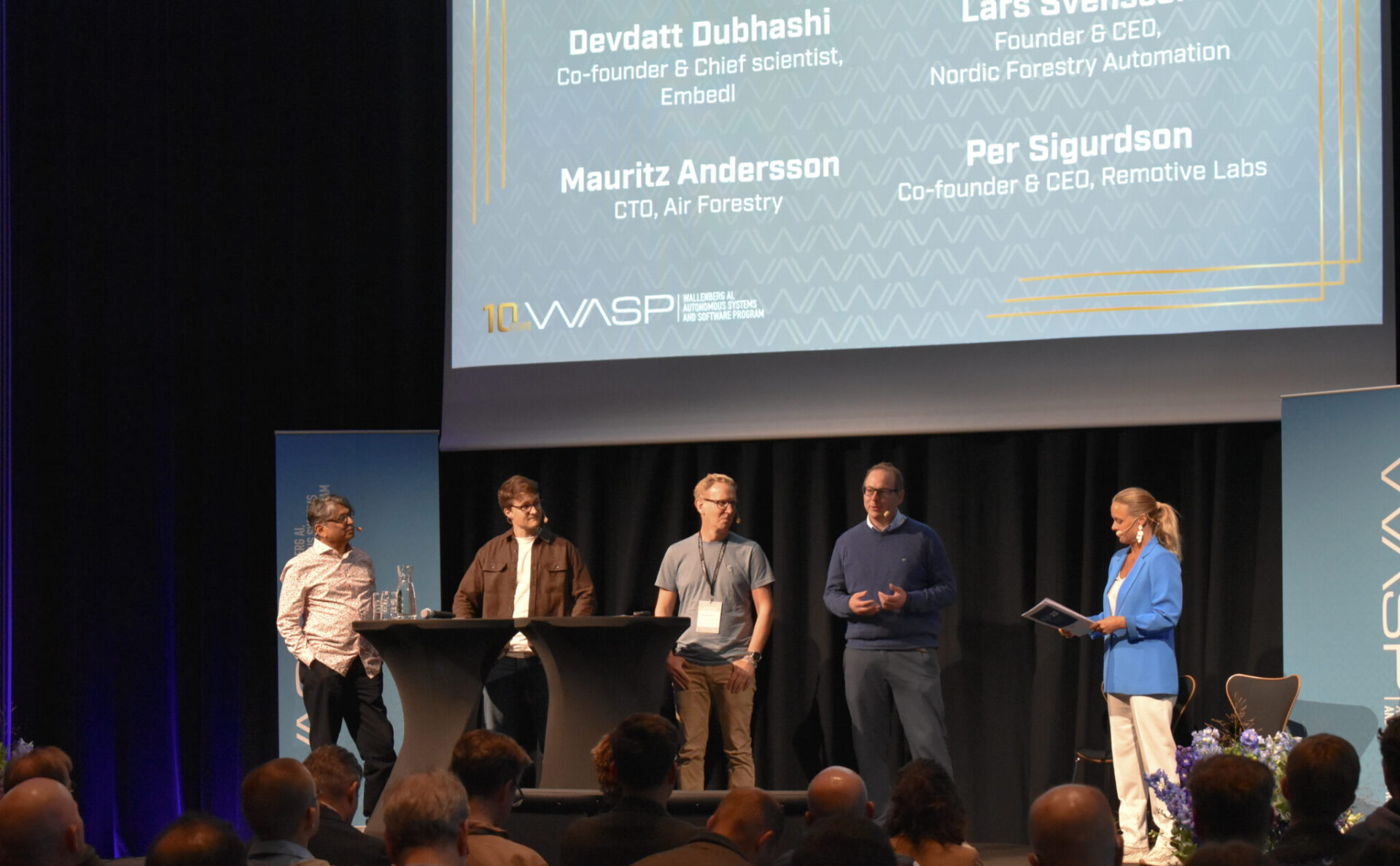
Industry Perspectives: Scaling AI Responsibly
Yaron Shaer, CTO of Klarna, described AI as “the biggest tech leap since the internet.” Klarna reports 96% employee usage of AI, driven by centralized infrastructure, high-quality data, and world-class talent. Shaer sees future breakthroughs in better data structures, agent scaffolding, and reducing cognitive load for models.
In a fireside chat with WASP Program Director Amy Loutfi, Sana CEO Joel Hellermark shared his vision of AI as “a bicycle for the mind.” He emphasized the importance of personalized learning and accessible information, while cautioning that vague regulation can hinder innovation.
Dag Lindblom, Head of AI & New Technologies at Ericsson, highlighted the gap between model capability and usability. He pointed to “knowledge architecture” as a promising area for research and entrepreneurship, especially in environments with messy or incomplete data.
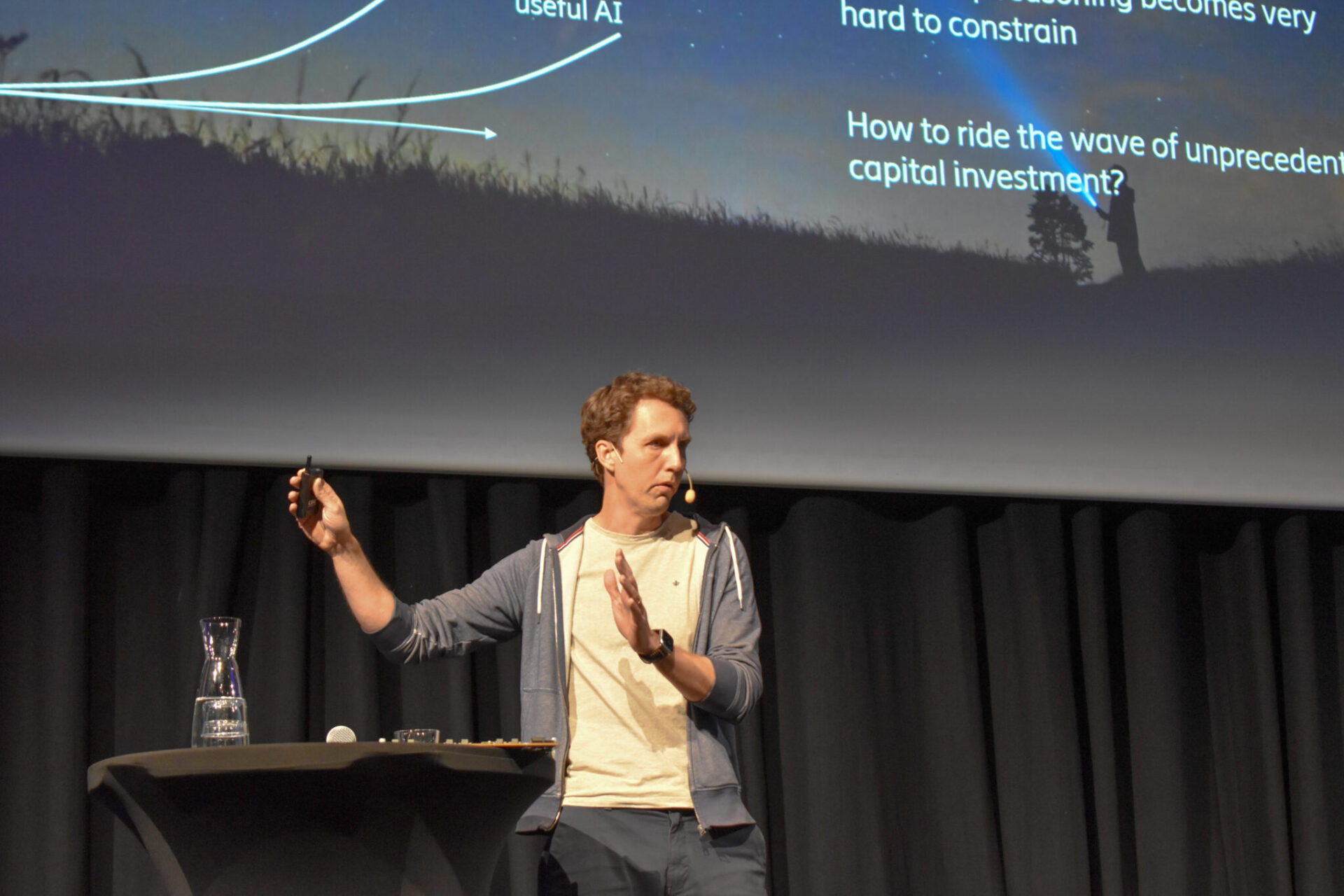
Collaboration, Connection, and Competence
The two-day event featured over a dozen seminar sessions on topics ranging from creative AI and commercializing science to strategic networking and industry–academia collaboration. Panel discussions spotlighted the WARA research arenas and company–researcher partnerships. A first-ever ‘networking fair’ staged many opportuntiies
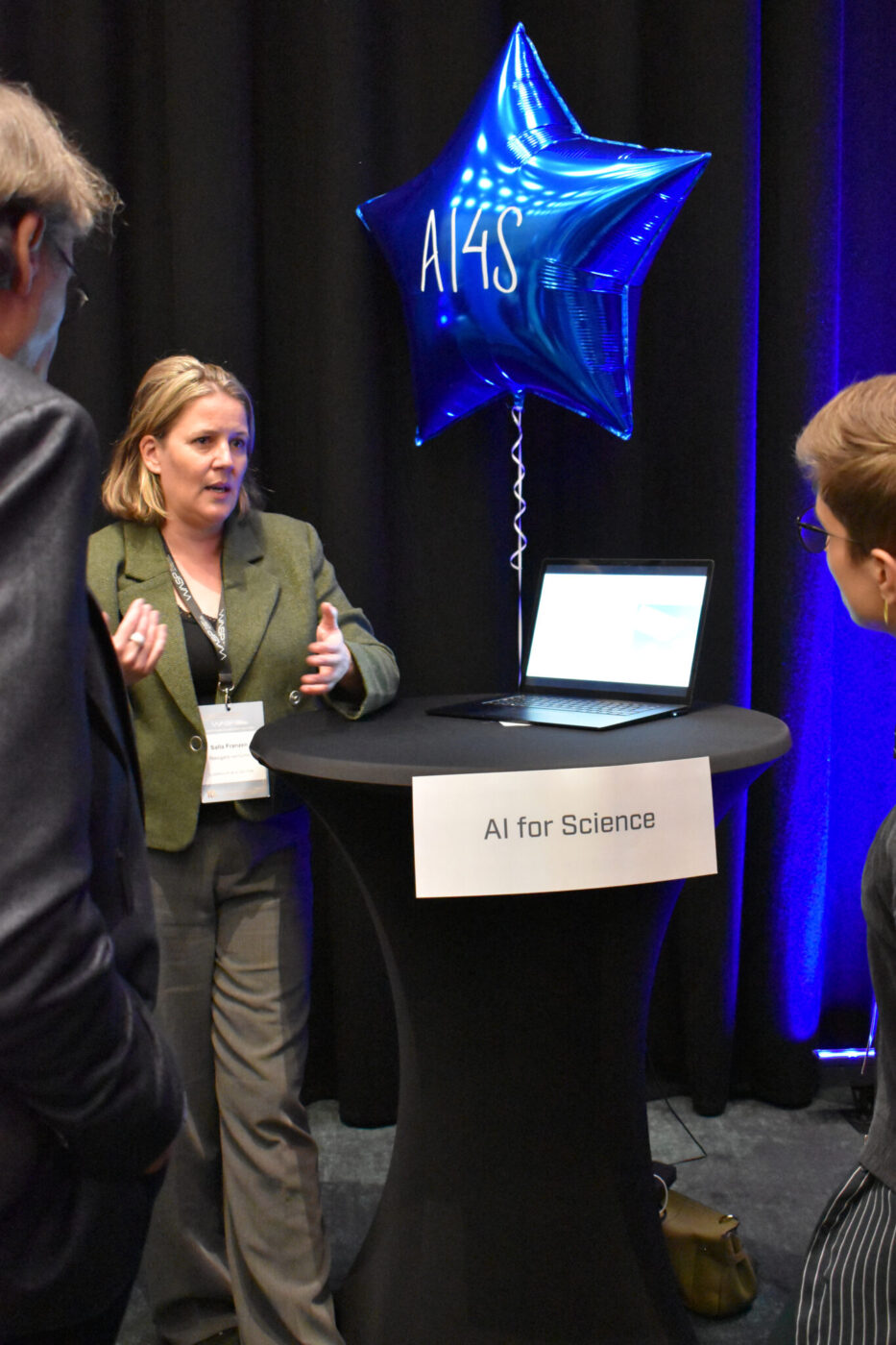
Throughout the conference, Amy Loutfi emphasized that foundational research is key to competitiveness. The program demonstrated how Sweden can scale both competence and impact by combining bold goals, disciplined data work, and cross-sector collaboration.
Learn more and explore the full program: industrydays.wasp-sweden.org
Published: October 13th, 2025
[addtoany]

